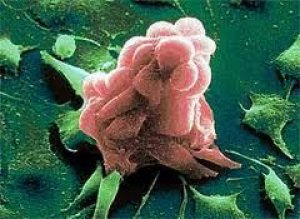
All iLive content is medically reviewed or fact checked to ensure as much factual accuracy as possible.
We have strict sourcing guidelines and only link to reputable media sites, academic research institutions and, whenever possible, medically peer reviewed studies. Note that the numbers in parentheses ([1], [2], etc.) are clickable links to these studies.
If you feel that any of our content is inaccurate, out-of-date, or otherwise questionable, please select it and press Ctrl + Enter.
Cancer is a multifactorial disease
Last reviewed: 01.07.2025

New information on the origin of malignant tumors was presented by scientists from the Institute of Biomedical Research in Barcelona (Spain), led by Travis Stacker and his colleagues from the Sloan-Kettering Cancer Center in New York (USA). The results of their study were published in the journal Proceedings of the National Academy of Sciences (open access).
The authors suggest that the primary occurrence of a tumor, its type, and its aggressiveness depend on a specific combination of defects in several processes whose purpose is to maintain the integrity of cells, such as the DNA repair pathways or cell cycle control. As evidence, they showed that mice with a high degree of chromosomal instability and a defective apoptosis (cell death) program—these most telling “black marks” of cancer—in fact rarely develop cancer.
According to the researchers, whether a tumor forms or not depends, firstly, on the moment during the cell cycle when the damage occurs, secondly, on which component of the repair system is damaged, and finally, on which other components of the self-destruction system are weakened here and now. That is, the most important thing is not one factor, not one breakdown (easily detected after the fact), but an unfortunate combination of several factors and defects at once.
The authors of the work used mice carrying mutations in key genes responsible for the restoration of damaged DNA. Then they combined these genes with other mutations that affected either the course of apoptosis or the quality of control over the cell cycle, until they discovered that very “unlucky” combination for mice, the set of factors of which was sufficient to initiate oncogenesis.
During DNA replication, a dividing cell has a series of checkpoints that test the correctness of the duplication process. If the cell detects errors at any point, cell growth stops and an extremely complex DNA repair process is set in motion. If this too is faulty and the cell accumulates more and more errors in the genome, last-line defense proteins such as the tumor suppressor p53 come into play. Without wasting time on trifles, they immediately proceed to activate the cell death program or interrupt the cell cycle (the cell will grow old and die without leaving any offspring). All of this, as you can see, is a very complex network of interacting proteins.
The study showed that genomic instability in itself is not a necessary and sufficient condition for the obligatory development of a tumor. The authors believe that it is necessary to study various types of malignant neoplasms in much greater detail, trying to determine the key factors of the oncogenesis that occurred, even if this is more difficult than looking for a needle in a haystack, because one obvious factor, as it now turns out, is not enough.
Accurately identifying the components of “unlucky combinations” could revolutionize modern diagnostics and therapy of cancer.

 [
[